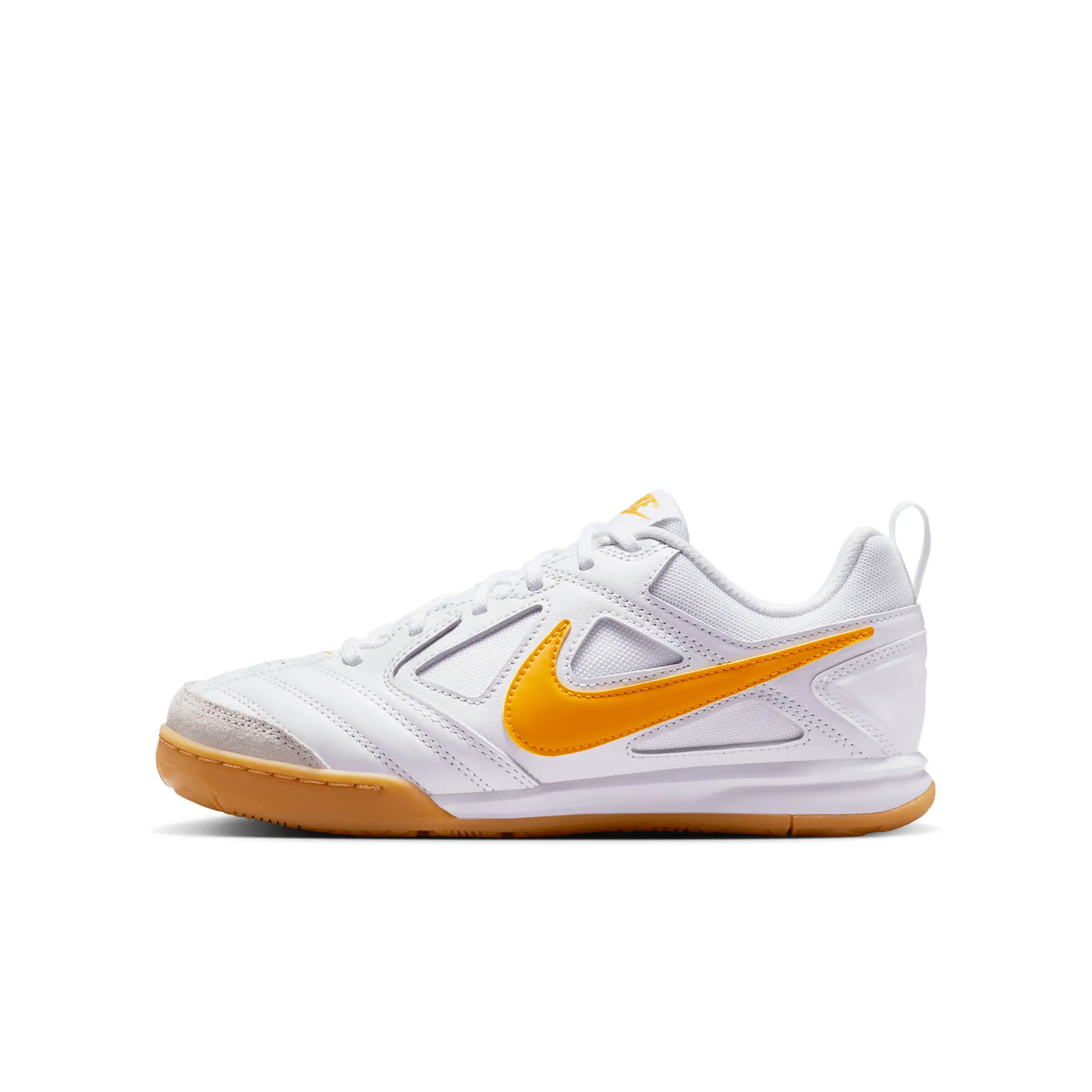
Indoor Football Shoes
Perfect for futsal and five-a-side, indoor football shoes help you play safely on harder surfaces. Since studs are pretty useless on smooth indoor courts, these trainers all feature flat soles to offer the best grip possible. After all, you certainly don’t want to fall flat on your face. Ouch.
Wearing the wrong footwear can also cause damage to the court itself. No need to panic, though, because you can choose from loads of non-marking indoor shoes from brands like Nike, adidas and Puma. Even better, you can compare prices on men's and kids' sizes right here with us.

FILTER
More Filters
Less Filters
View Results (
)

FILTER
More Filters
Less Filters
View Results (
)
Products
What are Indoor Football Shoes?
You’ve probably gathered that indoor football shoes are ideal for, um, indoor football. Unlike most other boots, they typically feature flat grooves instead of any protruding studs, since this is the only way you won’t constantly fall down in a heap.
What you might not have realised, however, is that you should always play indoor football in trainers with a non-marking rubber sole. Yeah, this is so important we’ve even put it in bold, because otherwise you’ll be left with a very angry court owner and an eye-watering maintenance bill. Yikes.
Of course, all of the boots above are made from non-marking rubber, so you can breathe a little easier now. Above all, though, they offer the grip and traction you need to play indoors - and also make that strangely satisfying squeak when you’re running around.
That’s the beautiful sound of intense friction, and futsal shoes are all designed to put up with it. Durability is definitely your friend here.
Can You Wear Indoor Football Trainers Outside?
Hard indoor courts can be pretty unforgiving, and this is where indoor football shoes always work best. The flat, grippy soles stop you from falling over and coming home with a bruised and bloodied nose. Thank goodness.
When you don’t play exclusively indoors, you might be left wondering if you now need to buy boots for your other playing surface. Yes, you probably do, but you can still get away with wearing indoor trainers on both concrete and dry artificial grass surfaces if you really needed to. Just bear in mind that you’d be playing at a severe disadvantage.
What you definitely can’t do, though, is wear these shoes in any wet conditions, and you should also entirely avoid natural grass and astro turf pitches. They just don’t offer the right level of traction, and you’d look very silly indeed sliding all over the place.
Useful Guides
There’s nothing worse than wasting money on the wrong kind of football boots. You’ve got to get your head around all the different surface types and boot models to avoid this mistake, but sometimes it can all get a little confusing.
So, as well as helping you find an awesome price, we also put time into helping you buy the right stuff. These guides should help you pick out something you love, while you might even learn a few handy things along the way.
Best Indoor Football Shoes
There’s just too much choice out there. We’ve done the hard work and picked out the best indoor football shoes you can buy right now.
Different Types of Football Boots
This is our complete guide to all the different types of football boots, including when to wear each surface type.
Astro Turf Boot Guide
You might be thinking of wearing indoor shoes outside, this guide runs through exactly what you can get away with. And what you can't.







![Nike Gato Ic - White/Black/Gym Red - ['White']](https://productimages.footy.com/68005477287783b04b67cb52/0/3840.webp?q=75)


![Nike Gato Ic - Black/White/Gum Light Brown Kids - ['Black']](https://productimages.footy.com/67ff2c609c076e5b05ddc00d/0/3840.webp?q=75)





























![Nike Mercurial Vapor 15 Club Ic Blast - White/Baltic Blue/Pink Blast Kids - ['White']](https://productimages.footy.com/6796536f166633c1b7714329/0/3840.webp?q=75)

![Nike Mercurial Vapor 16 Club Ic Mad Energy - Ember Glow/Aurora Green - ['Red']](https://productimages.footy.com/6788a6ed7c104a6f76a24b4c/0/3840.webp?q=75)












